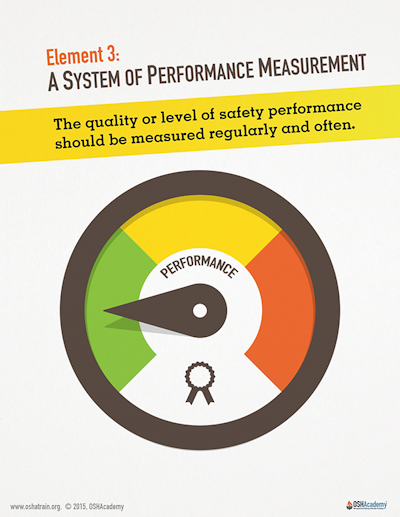Element 3: A System of Performance Measurement
Once again, when applied to safety behavior and performance, being held accountable demands more than simply being answerable. In an effective accountability system the quality or level of safety performance is measured regularly and often. Measurement processes include informal/formal observations. However, effective measurement means more than merely observing behaviors. It also includes quantifying behaviors and activities and then adding up the numbers. Those numbers, called Key Performance Indicators, form the statistics that you can use to improve the safety management system.
Key Performance Indicators Up and Down the Organization
Examples of measured safety behaviors and performance at various levels include:
Top/mid-level managers: Unfortunately, measurement at this level typically includes lagging indicators or results statistics over which top managers actually have little direct control. It's hard to control something, like an accident, that has already occurred. These measures include:
- accident rates
- experience modification rate (MOD Rate)
- workers' compensation costs
This situation may cause top managers to put pressure on supervisors to hold down the number of accidents in their departments. Consequently, the result may be ineffective measurement at all levels. Leading indicators measure performance that occurs before an accident. They are more proactive and beneficial because they help to prevent future accidents. Appropriate leading indicator behaviors and activities to measure at top/mid- level management include:
- Involvement in safety management system formulation and implementation;
- Developing effective safety policies, programs, procedures;
- Arranging management/supervisor safety training;
- Providing physical resources and psychosocial support;
- Involvement in safety education/training;
- Supporting involvement in the safety committee.
Knowledge Check Choose the best answer for the question.
1-7. Why are lagging indicators less valuable than leading indicators as performance measures?
You forgot to answer the question!

